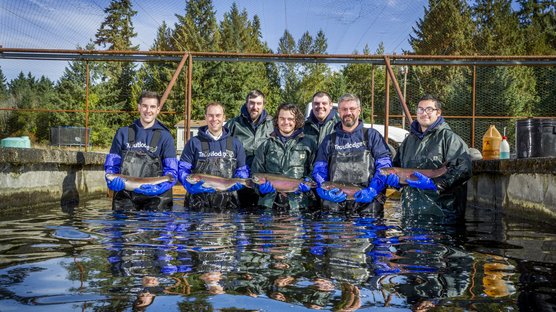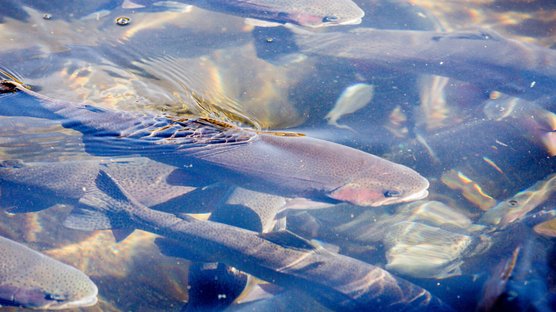
Published on Feb. 28, 2024
BCWD resistant trout eggs now available year-round
We are proud to announce this important milestone in year-round availability of Bacterial Cold Water Disease (BCWD) resistant trout eggs for our customers all over the world. This development is the culmination of over ten years of research and investment to combat this damaging disease.
Flavobacterium psychrophilum, the bacteria that causes Bacterial Cold Water Disease (BCWD), also known as Rainbow trout fry syndrome, causes substantial losses in the industry. Fish that are infected not only show lowered survival rates, but they also show a decrease in appetite and growth, which negatively impacts economic performance.
Troutlodge, in collaboration with the USDA, initiated research over 10 years ago to help solve this issue. Through the development of a SNP chip, use of genomic selection and laboratory challenges, we have focused on increased BCWD resistance in our breeding program, with outstanding results. In laboratory challenges, we have increased the survival rate from 30%, to nearly 80% in 2-3 generations of selection. We've also seen significant results in the field when using the BCWD resistant trout eggs.

We are so happy to use the BCWD resistant ova for us as well as our customers. We tried them from the very beginning and now have the experience of many years. Because we have four batches per year on our farm, we have seen the results of both strains, giving us a direct comparison. It makes a big difference.
This FAQ aims to address common questions related to the introduction of BCWD-resistant trout eggs.
An FAQ for BCWD resistant trout eggs
What are the benefits of these eggs? Are there additional performance implications?
The benefits of increased resistance extend beyond improved survival. With increased resistance, farmers are less likely to require the use of antibiotics. Reduced antibiotic usage is important for cost reasons, but it also good for the environment and helps prevent the issue of antibiotic resistance for humans and animals. By preventing an outbreak, this also eliminates the associated decreases in appetite and growth. Additionally, infected fish can mean reduced downgrading at harvest due to deformity caused by the BCWD pathogen.
Are the BCWD resistant eggs considered GMO?
No, they are not. Here is where it is important to understand the differences between genetic modification and selective breeding using genomic data. Selective breeding takes advantage of variation that’s already present in a population. Some fish are naturally more resistant than others. Genomic selection is the most efficient and accurate way to identify the most resistant animals by looking at their DNA. On the other hand, genetically modified organisms have foreign DNA inserted into their genomes to improve resistance.
When will they be available for order?
Right now! In 2022, we were able to offer enhanced resistance in our November strain, and in 2023 we continued to expand availability for February and August strains. We are proud to accomplish our goal of having all four strains showing resistance in 2024, and this product is now available to all customers.
Click here to start your order.
Are they 100% resistant to BCWD?
No. It is still possible to experience BCWD outbreaks with the resistant eggs, but chances are it will be less severe. Improving resistance is not like turning on a light switch, but instead it is a continuous process. With each new generation, the level of resistance will increase due to continuous selection. It’s important to remember that genetic selection is one method for improving resistance. The best results will be seen in combination with good biosecurity and husbandry practices. Click here to view our management guide on Fish Health
What about other diseases such as IHNV?
Selection for disease resistance requires significant investment and time, thus it is important to focus on diseases that have significant impact on the industry. Infectious Hematopoietic Necrosis Virus (IHNV) is one such disease, affecting some trout markets with heavy mortality. We have applied the same technology (genomic selection) to improve resistance to IHNV which is now available in certain seasons. Contact sales department to inquire. In addition to IHNV, we are investigating other potential diseases to improve resistance such as VHS and PKX.
Fish health and protecting against disease is one of the most significant risks we face as an industry. We are dedicated to supporting our customers and the industry through continuous improvement and innovation in our breeding program.



